Crickets, Mealworms, and Locusts, Oh My!
FOOD SAFETY & QUALITY
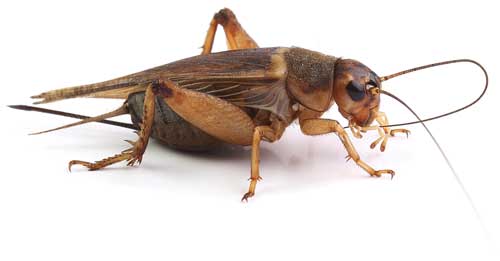 Humans have consumed insects since prehistoric times. More than 80% of the world’s population consumes insects, but in some countries eating insects is not culturally acceptable or allowed. Developed countries, specifically Western countries, have only recently begun investigating the use of insects as human food or food ingredients. The Food and Agriculture Organization of the United Nations has been working on topics pertaining to edible insects worldwide since 2003 and published a detailed report in 2013 titled “Edible Insects: Future Prospects for Food and Feed Security.”
Humans have consumed insects since prehistoric times. More than 80% of the world’s population consumes insects, but in some countries eating insects is not culturally acceptable or allowed. Developed countries, specifically Western countries, have only recently begun investigating the use of insects as human food or food ingredients. The Food and Agriculture Organization of the United Nations has been working on topics pertaining to edible insects worldwide since 2003 and published a detailed report in 2013 titled “Edible Insects: Future Prospects for Food and Feed Security.”
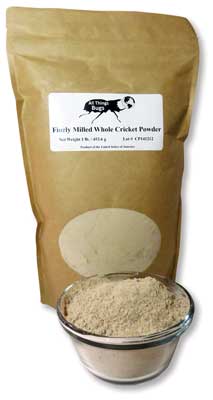 Crickets are among the more than 1,900 species of insects eaten by various cultures around the world and are said to be a potentially sustainable and environmentally friendly source of high-quality protein to meet the needs of the world’s growing population. Aaron T. Dossey, founder of All Things Bugs LLC (ATB), Athens, Ga. (allthingsbugs.com), the world’s largest producer of cricket powder, said that production of insects, which he calls “mini-live-stock,” requires less feed, water, land, and energy to produce than any other form of livestock and that their production generates substantially lower environmental pollutants such as pesticides and greenhouse gases. Crickets create 4.4 times more protein output per feed input. They contain numerous essential nutrients such as vitamin B12, riboflavin, and vitamin A; are particularly high in omega-3 fatty acids; and can be farmed in an industrial setting efficiently and free from environmental toxins and pathogens.
Crickets are among the more than 1,900 species of insects eaten by various cultures around the world and are said to be a potentially sustainable and environmentally friendly source of high-quality protein to meet the needs of the world’s growing population. Aaron T. Dossey, founder of All Things Bugs LLC (ATB), Athens, Ga. (allthingsbugs.com), the world’s largest producer of cricket powder, said that production of insects, which he calls “mini-live-stock,” requires less feed, water, land, and energy to produce than any other form of livestock and that their production generates substantially lower environmental pollutants such as pesticides and greenhouse gases. Crickets create 4.4 times more protein output per feed input. They contain numerous essential nutrients such as vitamin B12, riboflavin, and vitamin A; are particularly high in omega-3 fatty acids; and can be farmed in an industrial setting efficiently and free from environmental toxins and pathogens.
ATB develops insect-based food and feed products, insect-farming technologies, and insect-derived biologically active chemical compounds for use in food, agriculture, and medicine. Dossey began research and development on cricket methods and products in 2011 and in March 2012 received a $100,000 grant from the Bill and Melinda Gates Foundation to develop a sustainable eco-friendly food product to eliminate malnutrition in children in famine-stricken areas of the world. The project involved developing several prototypes of ready-to-use therapeutic foods (RUTFs) based on crickets and mealworms and looking at the nutrient content of other insects such as Caribbean fruit flies and grasshoppers.
In June 2013 he received a $100,000 phase I grant from the Small Business Innovation Research Program of the U.S. Dept. of Agriculture (USDA) to further develop a ready-to-use food from insect ingredients and insect processing techniques. The project resulted in RUTF formulations, a cricket powder process, a filing for a patent on powder processes and chitin-removal processes, and commercialization of the technology. In September 2014 he received a $450,000 phase II grant from the USDA to refine the technology for manufacturing cricket powder and evaluate its functionality as a safe food ingredient. The project involves developing pastas, tortillas, alternative meats, and other foods with crickets, mealworms, and waxworms; doing shelf-life testing on cricket powder and product development work with crickets, mealworms, and waxworms; and conducting safety testing of cricket powder.
In June 2015 he received a $100,000 grant from the USDA to improve efficiency, economics, and scale of farming crickets for human food. The company will use the grant to study how to increase automation in raising crickets. It will focus on harvesting, watering, and feed formulations with the goal of enhancing growth of crickets while lowering the cost of raising them, which in turn can decrease the price of cricket powder. About 25 companies in the United States and Canada are producing consumer products with cricket powder, and several industrial farms are raising crickets for human consumption. Farming these insects around the world is primarily manual, Dossey said, with labor costs, in particular, keeping the price of cricket powder relatively high.
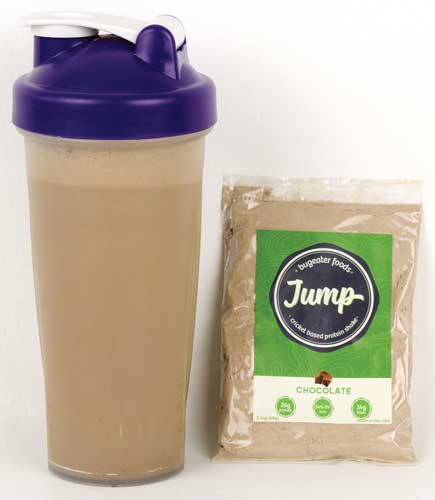 ATB made its first production run in January 2014, produced and sold approximately 10,000 pounds of cricket powder that year, and will produce at least 25,000 pounds in 2015. The company manufactures and sells its Finely Milled Whole Cricket Powder wholesale to food companies as well as in one-pound bags via its website. The cricket powder is made from house crickets (Acheta domesticus) that the company buys from established, reputable, and clean cricket farms—primarily Armstrong Cricket Farm, the oldest cricket farm in the United States.
ATB made its first production run in January 2014, produced and sold approximately 10,000 pounds of cricket powder that year, and will produce at least 25,000 pounds in 2015. The company manufactures and sells its Finely Milled Whole Cricket Powder wholesale to food companies as well as in one-pound bags via its website. The cricket powder is made from house crickets (Acheta domesticus) that the company buys from established, reputable, and clean cricket farms—primarily Armstrong Cricket Farm, the oldest cricket farm in the United States.
The company obtains frozen whole crickets; grinds them to a particle size of 100 microns or lower; and pasteurizes, spray dries, and packages the powder for distribution to food and feed manufacturers. The crickets are ground and pasteurized wet, as a slurry/liquid, which helps reduce the heat required to kill microbes and dry the product and allows for use in standard food processing equipment. The process has a high production efficiency and throughput, Dossey said, and involves milder treatment of the insect material than roasting and grinding, which most other manufacturers of insect ingredients are doing. The resulting powder has a mild aroma, no detectable insect parts, a low moisture content, and a long shelf life. It is finely milled so it can mix with other ingredients without affecting their texture and flowability through food equipment. It also works in beverages such as protein shakes.
--- PAGE BREAK ---
ATB monitors the microbiological status of the final product of every batch, using a composite of samples taken throughout production. Composite samples of raw crickets and samples in the middle of the production process are retained frozen to be able to trace the source in case any microbiological issue arises. Samples from occasional production runs are sent to an analytical laboratory for nutrient analysis and testing for heavy metals, mycotoxins, and allergens. Dossey said that since persons allergic to shellfish may also be allergic to insects, he recommends that products containing insects be labeled as containing potential food allergens.
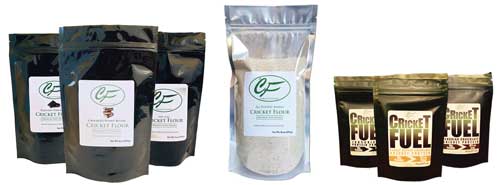
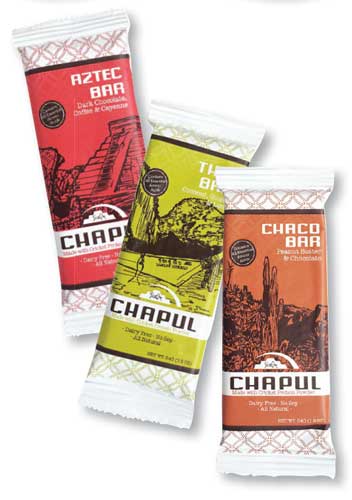 Cricket powder is being used in food products manufactured by a number of relatively small companies, such as Chapul, the first company to market products (protein bars) with cricket flour, Bugeater Foods (protein shakes), Cricket Flours (smoothies and milkshakes), Six Foods (tortilla chips), LaViewEye (bars and baked goods), Exo (protein bars), and several other companies—some using cricket powder from ATB and some using cricket powder they obtain from other suppliers or produce themselves. Dossey said he expects several larger, more mainstream food companies to develop and market products with ATB’s cricket powder by early 2016. Although the company now has several competitors (among them Next Millennium Farms, Tiny Farms, Aspire, Cricket Flours, and Big Cricket Farms), ATB is the largest producer of cricket powder.
Cricket powder is being used in food products manufactured by a number of relatively small companies, such as Chapul, the first company to market products (protein bars) with cricket flour, Bugeater Foods (protein shakes), Cricket Flours (smoothies and milkshakes), Six Foods (tortilla chips), LaViewEye (bars and baked goods), Exo (protein bars), and several other companies—some using cricket powder from ATB and some using cricket powder they obtain from other suppliers or produce themselves. Dossey said he expects several larger, more mainstream food companies to develop and market products with ATB’s cricket powder by early 2016. Although the company now has several competitors (among them Next Millennium Farms, Tiny Farms, Aspire, Cricket Flours, and Big Cricket Farms), ATB is the largest producer of cricket powder.
The company is also conducting research on buffalo worms, grasshoppers, black soldier flies, house flies, and Caribbean and Drosophila fruit flies. The company will soon make pilot batches of waxworm and mealworm powders for shelf-life testing and evaluation as food ingredients and will offer samples to potential customers to explore potential applications.
Dossey is planning to rename the cricket powder Griopro for better consumer acceptance (Grio for grillo, Spanish for cricket, and Pro for protein). He is also considering using the banded cricket (Gryllodes sigillatus) to provide more flexibility in sourcing the raw material. There are few, if any, nutritional and quality differences, he said, but the banded cricket is hardier and more resistant to certain insect-specific viruses which tend to wipe out house crickets at farms.
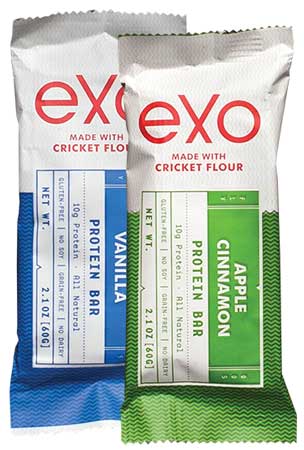 Dossey pointed out that each company in the insects-as-food industry needs to focus on one of three activities— farming, processing, and end products—instead of combining them. This will allow synergy toward achievement of the much-needed larger scale and lower price points as fast as possible with minimal inhibitory competitive activity. He said that while ATB is developing different insect-based food products to evaluate the efficacy, properties, and ways of use for the ingredient, the company doesn’t plan to launch its own end products in the near future unless it develops something very exciting that no one else seems interested in marketing.
Dossey pointed out that each company in the insects-as-food industry needs to focus on one of three activities— farming, processing, and end products—instead of combining them. This will allow synergy toward achievement of the much-needed larger scale and lower price points as fast as possible with minimal inhibitory competitive activity. He said that while ATB is developing different insect-based food products to evaluate the efficacy, properties, and ways of use for the ingredient, the company doesn’t plan to launch its own end products in the near future unless it develops something very exciting that no one else seems interested in marketing.
Dossey and others are working to establish a nonprofit organization called the International Society for Food and Feed Insects to promote and help the emerging insect-based industry. As for the next steps in getting more insect-based products to the market, Dossey, who is editing a book on insect products and processing that Elsevier will publish in 2016, said that the industry should continue to increase the scale of production by existing and new insect farms; continue talking with mainstream food companies to get them to launch insect-based products; continue research and development to demonstrate quality, functionality, and safety of insect-based ingredients; and streamline insect farming to reduce cost. Costs will go down with both scale and innovation, he said.
--- PAGE BREAK ---
Students Use Insects to Address World Nutrition Problems
The Institute of Food Technologists Student Association (IFTSA) held its 2015 “Developing Solutions for Developing Countries Competition.” Designed to develop new products and processes for improving the quality of life for people in developing countries, this year’s contest challenged student teams to develop a nutritious and desirable product using insects as a major ingredient. Fifty-nine teams from universities around the world submitted entries. Three finalists were selected from the United States and Canada and three from other countries. Final judging took place at IFT15, and the winners were announced July 12.
Jaime Savitz, nutrition major at California Polytechnic State University, chaired the competition, and six scientists from the food industry served as judges. The students submitted detailed entries that included discussion of why the product and process were chosen; the need for and relevance of the product and process to the local region; product formulation and ingredient functionality; competitive framework; sensory/consumer testing; shelf life estimate; price/ cost evaluation; packaging; process description, including flow diagram, Hazard Analysis Critical Control Points, operating cost, and capital investment estimate; safety evaluation; pertinent regulations; legal implications of the product (nutrition labeling, ingredient labeling, allergen labeling); and impact on developing countries.
Falamus Instant Mix received 1st place in the United States/Canada portion of the competition. Developed by the McGill University team of Loloah Chamoun (team captain), Niruya Kumarasamy, Lisa Lam, Arsalan Malick, and Homeiraa Waheed, the product is a dry mix of chickpea, lentil, sesame, locust (Locusta migratoria) meal, and spices for preparing falafel or hummus. It is designed to alleviate anemia and malnutrition, particularly protein and energy malnutrition, prevalent in Syrian refugee camps in Jordan. The shelf-stable product provides more than 30 g of high-quality protein and 67% of the daily value of iron per serving. Traditional falafel and hummus formulations do not meet the nutritional needs of Syrian refugees. Pulses are an excellent natural source of high-quality proteins rich in essential amino acids. The addition of red lentil and sesame meal improves the nutritional quality of the mix and helps achieve a more desirable color. The incorporation of locust meal complements the pulse mix, as it is a good source of protein, providing 50 g – 60 g per 100 g, plus vitamin D and iron. The dark brown color of locust meal is due to the presence of black and red pigments. To obtain an acceptable color, the black pigments were bleached with organic acids, which also enhanced iron absorption. Roasting of locust raw material eliminates concern regarding Beauveria bassiana, an infectious fungus associated with locusts, and the addition of ascorbic and citric acid decreases the pH of the mix, inhibiting growth of bacterial pathogens. The product has an estimated shelf life of up to two years. Its ability to produce instant products is accomplished by pre-gelatinization of lentils and chickpeas. About 80% of the Syrian population is Muslim, and locust is the only insect permitted for consumption by all sectors of Muslims in periods of strife. Because of the Syrian conflict, the abundance of locust swarms, and the scarcity of meat products, the consumption of locust can be justified.
NU Stew received 2nd place in the United States/Canada competition. Developed by the University of Wisconsin-Madison team of Case Dunphy (team captain), Bingxin Zhang, Cong Mu, Federica Ranelli, Indra Tanidjaja, Ke Xu, Mingye Li, Wenqin Tang, and Yan Li, the product is a canned groundnut stew made with spent silkworm pupae and is designed to alleviate hunger and nutritional deficiencies. Silkworm cocoons are boiled or steamed to kill the pupae inside and to soften the cocoons’ silk fibers into a continuous thread that can be spun for commercial use. The pupae are usually discarded or used as animal feed but can be used for human nutrition. Research shows that silkworm pupae are safe for human consumption. Based on a traditional groundnut stew consumed in those countries, NU Stew contains sweet potatoes, tomatoes, spinach, carrots, spices, peanuts, amaranth, and spent silkworm pupae. It is a complete source of protein; an excellent source of iron, zinc, and vitamin A; and a good source of folic acid. The shelf life is estimated to be up to three years.
Meal-malade received 3rd place in the United States/Canada competition. Developed by the University of Massachusetts, Amherst, team of Justine McAllister (team captain), Estefania Marti Malvido, Cansu Gumus, Ellie Florio, and Lianna Tilton, the product is a meal enhancer made with mealworm (Tenebrio molitor) protein powder, dry pineapple, tapioca (cassava starch), and sugar and fortified with vitamin A. It is designed as a meal enhancer to supplement the nutrition of children in Zambia, which has the highest rates of malnutrition in Africa, with 40% of the children under five chronically malnourished. The product is in the form of a powder and becomes a sauce when added to water and boiled. It can be added to traditional dishes or eaten alone. The product has a long shelf life due to the low water activity of the powder. Mealworm protein is a possible allergen, related to known allergens from house dust mites and crustaceans, and an allergen warning may be needed on the label.
Cricketa received 1st place in the international competition. Developed by the Universidad de Costa Rica team of Krissia Villalta Medina (team captain), Ana Cristina Azofeifa Sanchez, Gloriana Hernandez Monge, Daniela Kopper Valerio, and Pamela Malavassi Conejo, the product is an animal-shaped chocolate cookie made with cricket (Acheta assimilis) flour and sweet potato puree. It is designed to address the protein, iron, and vitamin A deficiencies of children in northern Costa Rica. The project was designed as a sustainable model, including cricket rearing, flour production, and cookie manufacturing and distribution. The ready-to-eat cookies provide children with needed vitamins, minerals, and protein. The low water activity and fat content of the cookie make it a very stable product if stored properly, with an estimated shelf life of three months. Since Costa Rica does not have an insect-eating culture, education is a fundamental part of this product’s introduction.
Molibannann received 2nd place in the international competition. Developed by the Universidad de Costa Rica team of Ana Maria Quiros Blanco (team captain), Valeria Dili Angel Mena, Gloriana Herrara Solis, Yock Mei Acon Chan, Marcela Rodriguez Gonzalez, Valeria Brenes Rodriguez, and Jimena Gonzalez Venegas, the product is a nutritive dry mix based on plantain and mealworm larvae flours that can be used to prepare a wide variety of typical Haitian dishes such as salty croquettes and patties as well as a sweet instant porridge. Mealworms have a short development cycle, high oviposition rate, high potential biomass increase per day, high substrate conversion rate, the ability to live in high densities, and low vulnerability to diseases. They are highly nutritious with fatty acid, protein, vitamin, and mineral content comparable to the content in fish and higher than that in cattle and pigs. The product is a high-protein, shelf-stable product that can be distributed at room temperature. The production process involves simple unit operations and requires unsophisticated technology. Most Haitian school children eat only one meal of rice and beans during the day in school feeding programs. The target market is children, but the product could be used by the entire Haitian community. Cattle production in Haiti is scarce due to the lack of feed, water, and space, so the introduction of edible insects is an excellent alternative to provide a good source of protein. This project proposed an integrated business from insect rearing to dry mix production.
Coco-Wormy received 3rd place in the international competition. Developed by the Universiti Putra Malaysia team of Khor Yih Phing (team captain), Tay Pei Yin, Sim Biow Ing, and Chang Hon Weng, the product is a biscuit made with mealworms, desiccated coconut, and sweet potato, designed to reduce protein- energy malnutrition and vitamin A deficiency in Southeast Asia, where protein energy malnutrition is endemic and commonly associated with vitamin A deficiency. The predominant staples in the Southeast Asian diet are mainly rice and other cereals. Four 100 g servings of the product can provide 100% of a child’s daily protein requirement and more than 50% of an adult’s. Mealworms provide all the essential amino acids, desiccated coconut is a good source of fiber, and sweet potato contains high amounts of vitamin A. Production of the product is simple, economical, and easily adopted for rural areas because no sophisticated equipment is needed and very little capital investment is required. The ingredients are locally sourced, cheap, and underutilized. Mealworms are herbivorous and thus considered relatively clean feeders. They are easy to handle, require less time for harvesting, survive well, and are easy to process compared to other insects.
IFT Symposia Address Insects as Human Food
Several symposia on insects as human food have been presented at recent IFT annual meetings: “Real Pioneers: Experience With Insect Ingredients, Processing, Products, and Marketing” (session 156 at IFT14); “Potential of Insects as Food and Feed in Assuring Food” (session 222 at IFT14); “Insect-Based Foods: Views from Different Perspectives” (session 056 at IFT14); and “Sustainability in Food Nutrition, Quality, Processing and Delivery: Let’s Take Action Now!” (session 174 at IFT15). To obtain recordings of the symposia, visit ift.org/meetings-and-events/past-meeting-resources/session-recordings.
 Neil H. Mermelstein, IFT Fellow,
Neil H. Mermelstein, IFT Fellow,
Editor Emeritus of Food Technology
[email protected]
